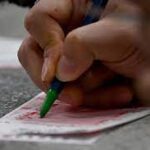Veteran sailor Don Calvert reflects on racing’s past

Related Story: Women making waves in Sydney to Hobart yacht race
Don Calvert knows a thing or two about sailing the Sydney to Hobart, now entering its 73rd year.
While the distance remains constant and the challenge of the weather is always a worry, technology is ever-changing.
Calvert, 82, is a 10-time veteran of the race, having first sailed in the 1979 event.
Back then, before modern satellite navigation was the norm, sailing the Sydney to Hobart was a different experience.
"In the early days, we had to measure the temperature of the water, and when we got the warm south-bound current, we knew we were on to a winner," he said.
These days, satellite navigation units measure a boat's speed over the water, as well as its ground speed, making finding the current a simple task.
In 1979, it was a manual operation.
"We'd have to get a bucket of water and put a thermometer in it, and see how warm it was," he said.
Calvert eventually fitted out his 36-footer Intrigue with the appropriate modern technology.
But not everybody was happy about it.
He recalled his navigator struggling to come to terms with essentially being replaced by the device, having spent years sailing by the stars.
"Some noises came from down below, 'beep, beep, beep'. He said 'I better go and have a look, and see what that means'.
"When he came back, he said, 'I told you it was no good, it says NFI — No Flaming Idea'."
Calvert had to explain that NFI actually stood for "No Fix", meaning the sole satellite in the sky was too low on the horizon to correctly calculate the boat's position.
Despite the device failing, his trusty navigator had been rendered obsolete.
"I'd say it made him pretty redundant," he said.
Boat building craft dying
While Intrigue may seem like a relic in comparison to the futuristic super-maxis, it's a relatively new boat compared to its neighbour at Hobart's Royal Yacht Club.
Berthed next door to Intrigue is Norla, a heavy, narrow, fully wooden yacht whose heyday was in the 1960s.
Even older than that is Caprice of Huon, a famous Tasmanian yacht that was hand built by Calvert's father, and which raced Sydney to Hobarts in the 50s.
"I can remember my father going around the west coast with a truck and coming back with some beautiful Huon pine logs," he said.
"Then he took the logs to the local sawmill and he told the saw miller how to cut the logs for the planking for the Caprice.
"You wouldn't be able to do that today."
As the years pass, so do the legends of Tasmanian wooden boat making.
Carbon-fibre hulls and complex electronic systems have become the norm, meaning the craft of hand-building a boat is dying.
"We had a lot of very skilful wooden boat builders. Noel Wilson and Rodney Good built Intrigue in an apple shed, down the Huon.
"A lot of those boat builders have passed on now or are too old."
While the size and shape of the boats has changed over the years, Calvert insisted the basics of the Sydney to Hobart remained the same, and sailors are no lesser these days.
"In theory, the weather would be the same, you run the same risks. Of course, these modern ones, you're not at sea for as long.
"But basically you have to do all the same things."
One-hundred-and-ten yachts of varying shapes, sizes and ages will line up on Sydney Harbour for the 73rd Bluewater Classic on Tuesday.
[contf] [contfnew]
ABC .net
[contfnewc] [contfnewc]
The post Veteran sailor Don Calvert reflects on racing's past appeared first on News Wire Now.





















